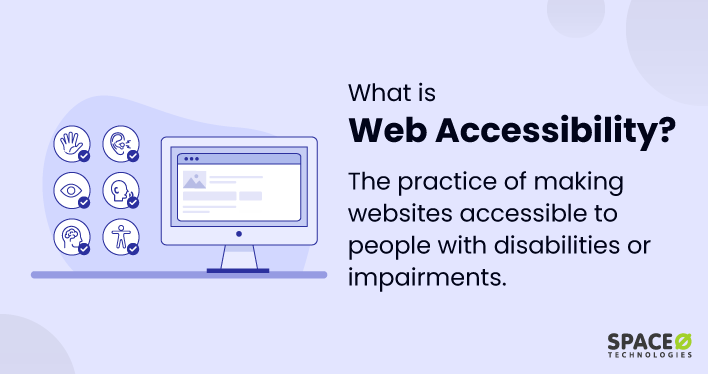Buzz Haven: Your Source for Trending Insights
Stay updated with the latest buzz in news, trends, and lifestyle.
Why Your Website Might Be Sabotaging Accessibility Without You Even Knowing
Is your website unintentionally harming accessibility? Discover hidden pitfalls that could be costing you visitors. Learn more now!
Unseen Barriers: How Common Design Choices Undermine Website Accessibility
Unseen barriers often stem from common design choices that may appear benign at first glance but can significantly undermine website accessibility. For instance, using low contrast between text and background colors can make it exceedingly difficult for visually impaired users to read content. Furthermore, overly complex navigation structures can confuse users who rely on assistive technologies, thereby reducing their ability to interact with the site effectively. It's essential for designers to consider accessibility from the beginning of the design process to avoid these pitfalls and create a more inclusive digital environment.
Another frequent issue arises from the use of images without alternative text. While a beautifully crafted graphic might enhance the visual appeal of a site, missing alt attributes can exclude users who utilize screen readers. Additionally, relying solely on color to convey information can alienate individuals with color blindness; a simple solution is to incorporate text labels or patterns to communicate essential information. By addressing these challenges and making conscious design choices, we can dismantle the unseen barriers that compromise website accessibility and promote an inclusive online experience for all users.

Is Your Website Scaring Away Users? The Hidden Accessibility Flaws You Might Overlook
When visitors land on your website, their first impressions matter immensely. Unfortunately, many webmasters overlook accessibility flaws that can significantly affect user experience. For instance, if your site is not optimized for screen readers, individuals with visual impairments may struggle to navigate your content, leading to frustration and a quick exit. Furthermore, color contrasts that fail to meet accessibility standards can render text unreadable for those with color blindness. These hidden issues not only alienate a segment of your audience but can also harm your search engine rankings.
Moreover, the importance of keyboard navigation should not be underestimated. Users who rely on keyboard functionality for browsing can find themselves trapped on your site if forms, buttons, and links are not properly coded. In addition to these technical considerations, loading times play a crucial role in user retention. If your website takes too long to load, users may abandon it before even experiencing what you have to offer. By prioritizing accessibility and user experience, you ensure that your website is welcoming to all, improving both engagement and conversion rates.
Five Subtle Ways Your Website Could Be Ignoring Accessibility Standards
Accessibility standards are crucial for ensuring that all users, including those with disabilities, can navigate and interact with your website effectively. One subtle way your site might be neglecting these standards is through the use of images without alt text. Alt text provides a textual description of images for screen readers, making visual content understandable for visually impaired users. If your images lack proper descriptions, you're potentially excluding a significant portion of your audience from fully engaging with your content.
Another common oversight involves the contrast ratio between text and background colors. Insufficient contrast can make it difficult for individuals with visual impairments to read your content. To comply with accessibility guidelines, ensure that your color choices meet the recommended contrast ratios for all text elements. Additionally, consider the use of keyboard navigation; if users cannot access your site through keyboard shortcuts due to missing focus states, they may struggle to navigate effectively. Simple measures like these can dramatically enhance the accessibility of your site.